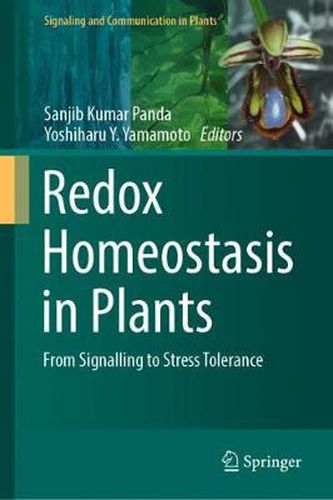Readings Newsletter
Become a Readings Member to make your shopping experience even easier.
Sign in or sign up for free!
You’re not far away from qualifying for FREE standard shipping within Australia
You’ve qualified for FREE standard shipping within Australia
The cart is loading…






This book summarizes the latest research results on the role of reactive oxygen species (ROS) in plants, particularly in many abiotic stresses, and their regulation. Redox homeostasis refers to maintaining a balance of oxidised and reduced state of biomolecules in a biological system for all-round sustenance. In a living system, redox reactions contribute to the generation of reactive oxygen species (ROS), which act as signalling molecules for developmental as well as stress-response processes in plants. It is presumed that, being sessile and an aerobe requiring oxygen for mitochondrial energy production, as well as producing oxygen during photosynthesis, the redox homeostasis process is more complex and regulated in plants than in animals. Any imbalance in the homeostasis is mainly compensated for by the production of various ROS molecules, which, though they can cause severe oxidative damage in excess, can also ideally act as signalling molecules.
$9.00 standard shipping within Australia
FREE standard shipping within Australia for orders over $100.00
Express & International shipping calculated at checkout
This book summarizes the latest research results on the role of reactive oxygen species (ROS) in plants, particularly in many abiotic stresses, and their regulation. Redox homeostasis refers to maintaining a balance of oxidised and reduced state of biomolecules in a biological system for all-round sustenance. In a living system, redox reactions contribute to the generation of reactive oxygen species (ROS), which act as signalling molecules for developmental as well as stress-response processes in plants. It is presumed that, being sessile and an aerobe requiring oxygen for mitochondrial energy production, as well as producing oxygen during photosynthesis, the redox homeostasis process is more complex and regulated in plants than in animals. Any imbalance in the homeostasis is mainly compensated for by the production of various ROS molecules, which, though they can cause severe oxidative damage in excess, can also ideally act as signalling molecules.